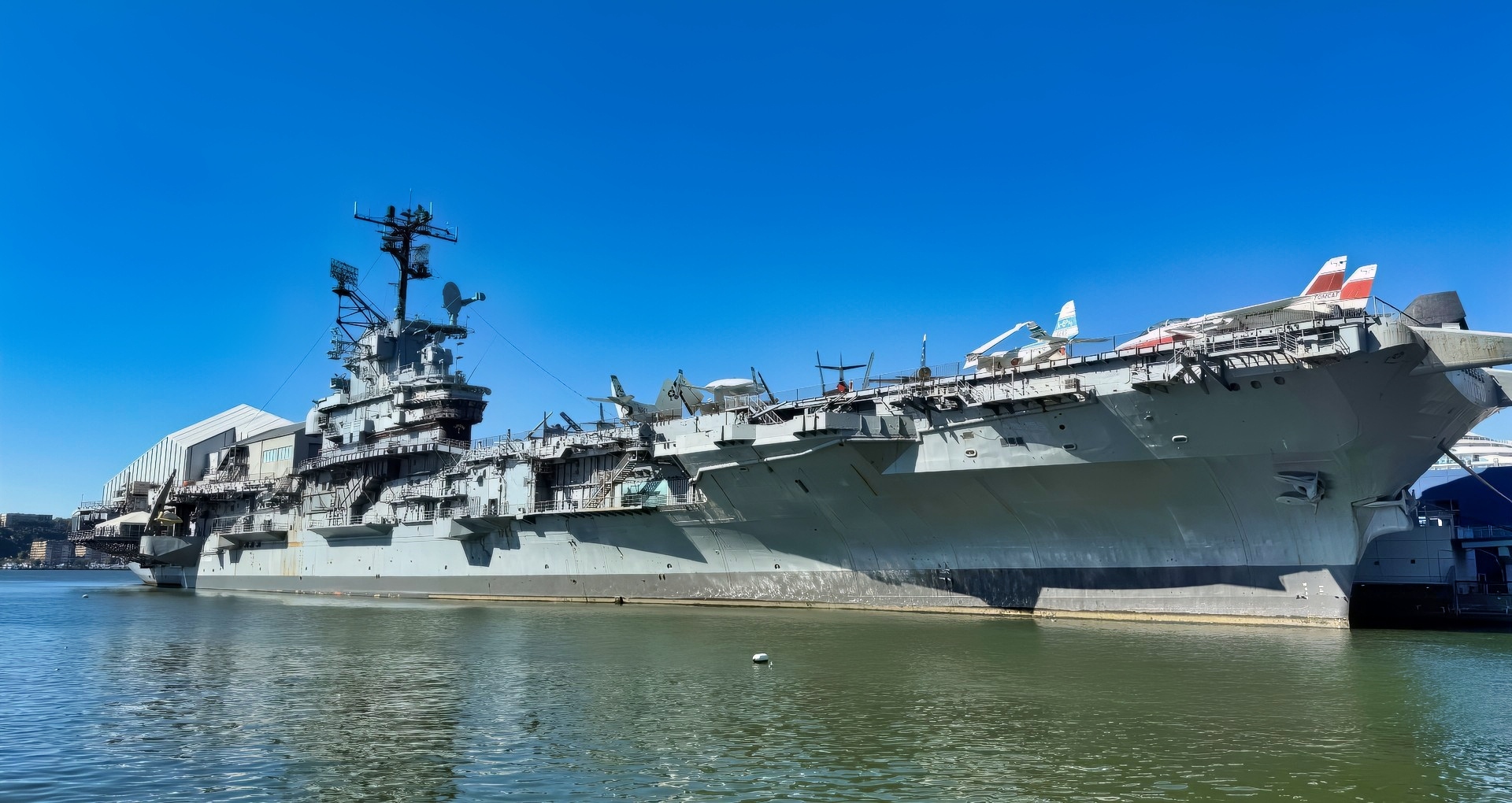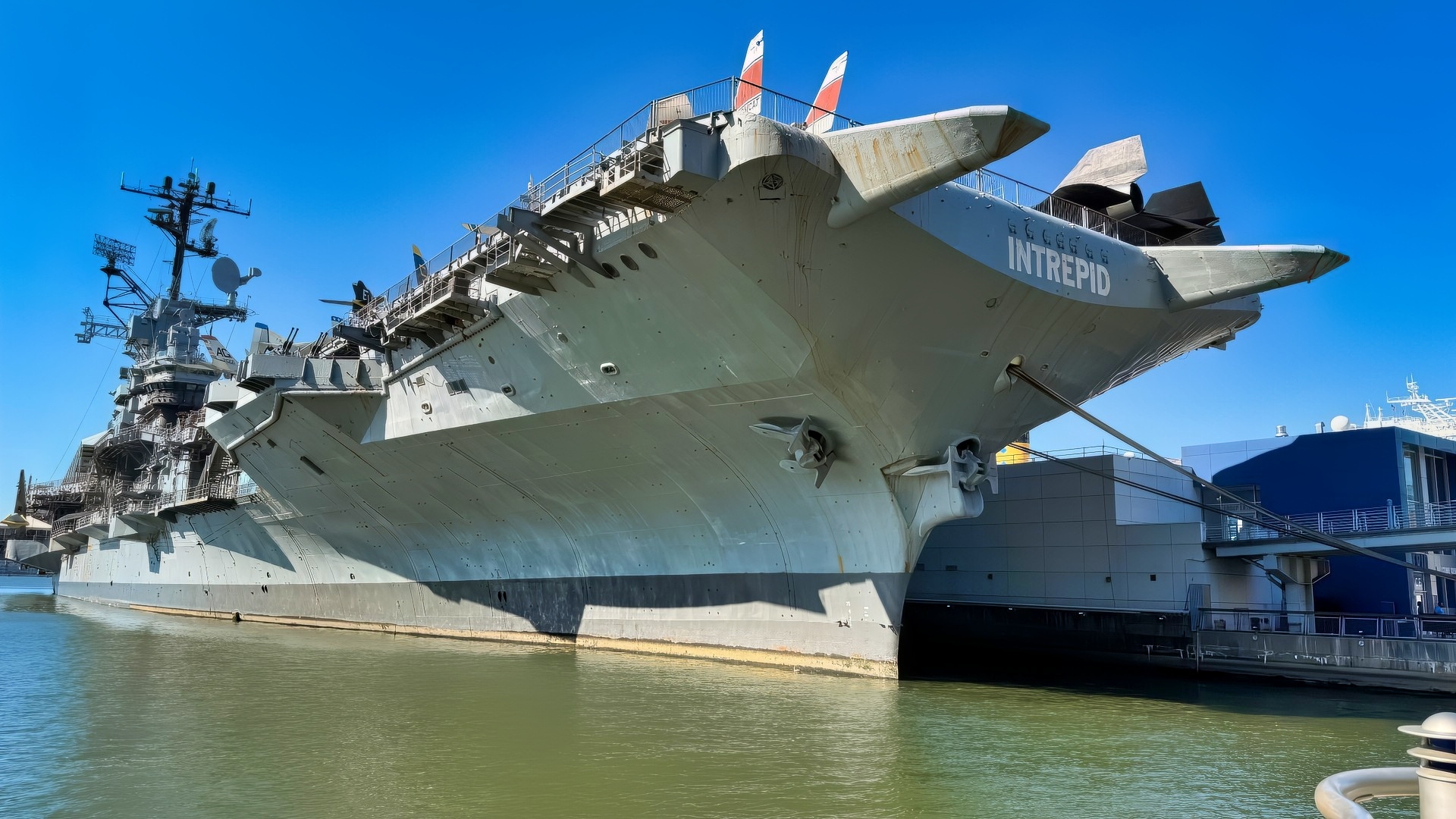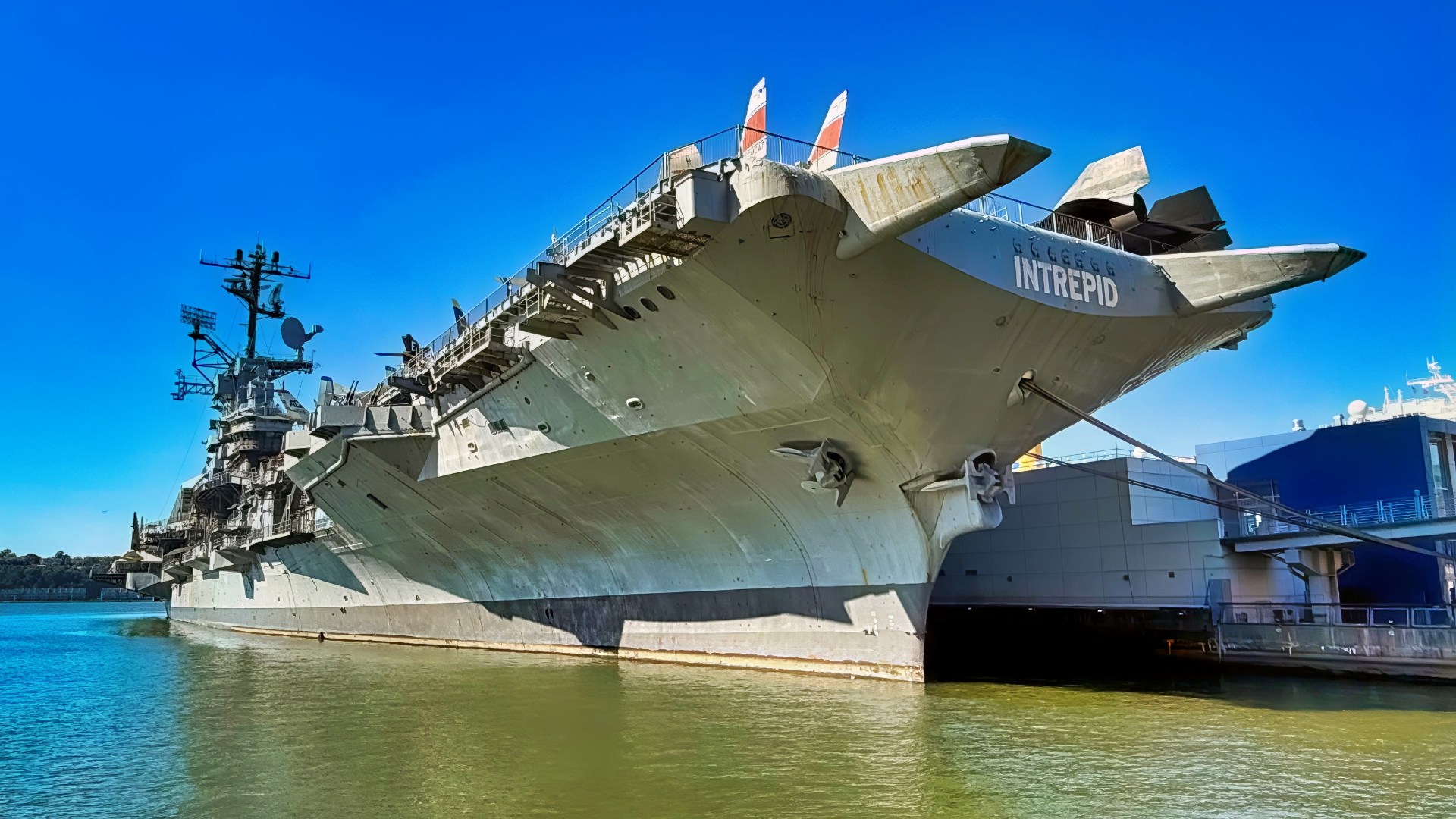Key Points and Summary – The Essex-class, with 24 carriers built rapidly during WWII, represents an industrial feat that “shames” modern U.S. shipbuilding, which is “struggling” and “outproduced by China.”
-This “marvel” class formed the backbone of the Navy for decades.

Essex-Class USS Intrepid Radar Station Photo. Image Credit: National Security Journal.
-They were “extremely survivable,” with none of the 14 that served in WWII lost to enemy action, even after carriers like the USS Franklin and Bunker Hill sustained “extremely heavy damage” from kamikaze attacks.
-There will never be another class like the Essex due to modern technological complexity and a diminished industrial base.
-BONUS – We visited the Essex-Class aircraft carrier USS Intrepid in New York City Harbor recently. We have included many of the photos from that visit.
There Is No Group of Aircraft Carriers Like the Essex-Class
Can you imagine if the United States could produce ships the way it did during World War Two? It would be a modern military industrial revolution. The U.S. could be as good as the Chinese at producing new vessels. Shipworkers during the 1940s were highly motivated and extremely patriotic. There were no worker shortages or supply chain problems. The government was never shut down, and the numerous shipyards were always busy.
The can-do attitude of the Greatest Generation produced the vaunted Essex-class carrier quickly and efficiently.
To be fair to current shipbuilders, there was not the same need for high technology that the latest Ford-class supercarriers demand—but the Essex flat-tops were a marvel at the time.
Can You Imagine 24 Carriers in the Fleet?
The Essex was the biggest class of carriers in U.S. history. Twenty-four vessels were produced. Imagine today’s Navy had an extra 24 carriers. China, Russia, North Korea, and Iran would be astounded. The Navy could cover the globe with multiple deployments. Other countries would never be able to make a military move without a U.S. carrier to confront them.
Esteemed War Record
Fourteen Essex-class carriers served in World War II. They then played a significant role in the Korean War and the Vietnam War, and one served as a training carrier until 1991. Four are now museum ships.
Eleven Essex-class capital ships operated during the Korean War, during which airplanes struck numerous targets in close-air support to help soldiers and Marines take on the North Koreans and Chinese. Essex aircraft hit command and control centers, air bases, and other installations. The carrier’s air wing downed numerous North Korean jets. One F9F Panther shot down four Russian-made MiG-15s.
During Vietnam, the Essex-class carriers shined. They carried A-4 Skyhawks and F-8 Crusaders that punished targets in South and North Vietnam. Some Essex-class carriers were made into anti-submarine platforms during the latter stages of the Cold War to keep Soviet boats from encroaching on the U.S. fleet. They even provided the aircraft that recovered astronauts during the space race.
Quick Look at Essex-class Specifications
The Essex-class flat-tops displaced 37,000 tons originally, and some were later fortified to reach a 47,000 ton displacement. These carriers were 872 feet long; not as lengthy as today’s supercarriers, but behemoths nonetheless.
The propulsion system was trusted and powerful. It consisted of four Westinghouse-geared steam turbines, eight Babcock & Wilcox boilers along with four shafts, and four propellers. The top speed was 32 knots, and the range was 20,000 nautical miles.
There were 2,630 sailors on board, about half of the personnel onboard today’s carriers. My father-in-law served on the Essex-class USS Oriskany (CV-34), the final carrier of the group. He worked as a flight deck hand during Vietnam and often completed 48 hour shifts. The Oriskany was also the carrier that future Senator John McCain served on.
There Could Have Been 32 Essex-class Carriers
The Navy ordered as many as 32 Essex-class carriers, but the end of World War Two resulted in the cancellations of some. It is difficult to imagine that many capital ships sailing today, but the class definitely was responsible for numerous victories during the war in the Pacific.
Engineers, designers, and technicians made sure the Essex-class was highly survivable in combat. These were strongly built ships and the Navy had every right to be proud of how they performed.
“Machinery arrangement and armor protection was greatly improved from previous designs. These features, plus the provision of more anti-aircraft guns, gave the ships much enhanced survivability. In fact, during the war, none of the Essex-class carriers were lost and two, USS Franklin (CV-13) and USS Bunker Hill (CV-17), came home under their own power even after receiving extremely heavy damage and were successfully repaired. Some ships in the class would serve until well after the end of the Vietnam War as the class was retired by newer build classes,” according to Sea Forces.
The Essex ships had a port-side elevator that joined the other two elevators. These allowed the airplanes to be replenished with fuel and munitions quickly and efficiently, enabling a safer process for maintenance crews and allowing the airplanes to fly more sorties during combat operations.
The carriers’ firepower was immense, and survivability was built into every design feature. None of the Essex-class carriers was sunk in combat. A few were badly damaged by Japanese kamikaze attacks, but they were repaired after the war.
The Essex-class Carriers Proved Their Mettle
There is much to learn from the Essex-class. The carriers eased the transition from propeller-driven airplanes to the jet age. They were “three war ——–” that helped create the modern day joint and combined arms doctrine, with air power serving in tandem with ground forces around the clock.
There will never be another class of carriers like the Essex. Technology needs today are too great. New flat-tops are too expensive, and the aircraft are complex and difficult to maintain. The shipbuilding industry today could not build that many carriers, considering manpower shortages, supply chain issues and a lack of shipyards.
You can still visit an Essex-class carrier today. Museum ships include the Yorktown in Charleston, South Carolina;, the Hornet in Alameda, California; the Lexington in Corpus Christi, Texas; and the Intrepid in New York City.
Photo Essay: We Take You Close to A Real Essex-Class Aircraft Carrier

Essex-Class Carrier USS Intrepid NSJ Photo.

USS Intrepid CV-11 Photo by National Security Journal Taken on September 18, 2025.

USS Intrepid NSJ Photo Taken on 9/22/2025. Taken by Jack Buckby.

USS Intrepid in New York Harbor. Original National Security Journal Photo.
About the Author: Brent M. Eastwood
Brent M. Eastwood, PhD is the author of Don’t Turn Your Back On the World: a Conservative Foreign Policy and Humans, Machines, and Data: Future Trends in Warfare plus two other books. Brent was the founder and CEO of a tech firm that predicted world events using artificial intelligence. He served as a legislative fellow for US Senator Tim Scott and advised the senator on defense and foreign policy issues. He has taught at American University, George Washington University, and George Mason University. Brent is a former US Army Infantry officer. He can be followed on X @BMEastwood.
More Military
Europe and Canada Are Finally Saying No to the F-35 Stealth Fighter
The Exact Day Navy Battleships Became Obsolete Is Clear
The X-44 Manta Has a Message for Every Air Force on Earth










